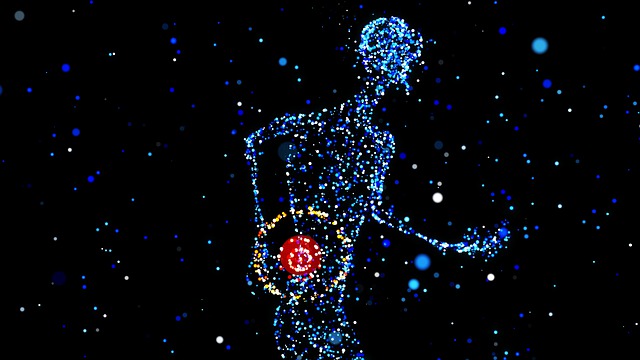 Three weeks ago after finishing up my shower in the morning, I bent forward to squeegee the water off the walls. All of a sudden my back seized up. Now the odd thing was that being bent forward was not the problem. It was when I tried to straighten up that it grabbed me. If the position was straining muscles or ligaments, I would have felt it in the strained/stretched position. But there was no pain in that position. It was as I started to straighten up that It felt like the muscles simply went into spasm mode. My immediate response, other than instantly freezing, was a “what the heck, I didn’t do anything” that sounded more like “ouch!”
Three weeks ago after finishing up my shower in the morning, I bent forward to squeegee the water off the walls. All of a sudden my back seized up. Now the odd thing was that being bent forward was not the problem. It was when I tried to straighten up that it grabbed me. If the position was straining muscles or ligaments, I would have felt it in the strained/stretched position. But there was no pain in that position. It was as I started to straighten up that It felt like the muscles simply went into spasm mode. My immediate response, other than instantly freezing, was a “what the heck, I didn’t do anything” that sounded more like “ouch!”
 I very slowly straightened halfway up, grabbed a towel, and gingerly hobbled to the bed where I spent almost an hour rocking gently in every direction trying to get the spasm to let go. That was halfway successful. It was enough that I could carefully walk out to the living room where I have my spare Activator adjusting tool, which I then used to adjust my own back. The adjustment allowed me to then stand fully erect, but I still had to move carefully and not try any forward bending movement.
I very slowly straightened halfway up, grabbed a towel, and gingerly hobbled to the bed where I spent almost an hour rocking gently in every direction trying to get the spasm to let go. That was halfway successful. It was enough that I could carefully walk out to the living room where I have my spare Activator adjusting tool, which I then used to adjust my own back. The adjustment allowed me to then stand fully erect, but I still had to move carefully and not try any forward bending movement.
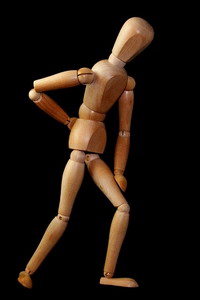 I have heard for years from patients that have told me how their back had gone out for no reason at all. Well, there is always a reason. The question is what is the reason? This experience of mine has shown me that the reasons I learned in school are not enough. Here is what they teach us as the causes for back pain:
I have heard for years from patients that have told me how their back had gone out for no reason at all. Well, there is always a reason. The question is what is the reason? This experience of mine has shown me that the reasons I learned in school are not enough. Here is what they teach us as the causes for back pain:
Trauma – muscle strain or ligament sprain, a broken bone, injury
Degeneration – inflammation/arthritis, disc degeneration, osteoporosis
Nerve – joint or cord compression, infection, disc bulge, tumor
Congenital – scoliosis, lordosis, spondylolisthesis, spina bifida
Referred – kidney stones, gut inflammation, uterine, fibromyalgia, heart
 As you can see, there are a lot of things that can cause back pain. The purpose of my initial exam is to rule out the possible causes that need other medical interventions to deal with the source of the pain. But what I experienced in the shower did not fit into any of the causes I was taught. None of those listed issues applied to my situation. I experienced a reactive muscle spasm caused by my attempt to use my muscles to straighten up. Either some muscles over-reacted, or failed to relax properly in response to the changing demand on the muscle/joint complex in my low back. This is supposed to be controlled by a special part of my nervous system called the proprioceptive system. This system is for balance and coordinated movement.
As you can see, there are a lot of things that can cause back pain. The purpose of my initial exam is to rule out the possible causes that need other medical interventions to deal with the source of the pain. But what I experienced in the shower did not fit into any of the causes I was taught. None of those listed issues applied to my situation. I experienced a reactive muscle spasm caused by my attempt to use my muscles to straighten up. Either some muscles over-reacted, or failed to relax properly in response to the changing demand on the muscle/joint complex in my low back. This is supposed to be controlled by a special part of my nervous system called the proprioceptive system. This system is for balance and coordinated movement.
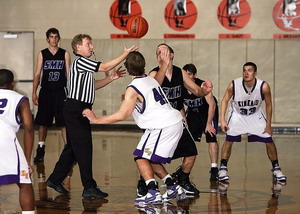 Back in school, I heard about a human study performed on college basketball players in the early 50s. In this study, the players were split into three groups. The first group simply played basketball as usual. The second group was put to bed for two weeks then released to play as usual, and the third group was put to bed for two weeks then given rehabilitation exercises before going back to play. These groups were followed for 30 years. Thirty years later the second group still showed significant deficits in their ability to function, while the third group was almost as good as the first group, but not quite. This study showed doctors that bed rest is generally a bad idea and always requires rehabilitation afterward if the patient is down for more than a couple of days.
Back in school, I heard about a human study performed on college basketball players in the early 50s. In this study, the players were split into three groups. The first group simply played basketball as usual. The second group was put to bed for two weeks then released to play as usual, and the third group was put to bed for two weeks then given rehabilitation exercises before going back to play. These groups were followed for 30 years. Thirty years later the second group still showed significant deficits in their ability to function, while the third group was almost as good as the first group, but not quite. This study showed doctors that bed rest is generally a bad idea and always requires rehabilitation afterward if the patient is down for more than a couple of days.
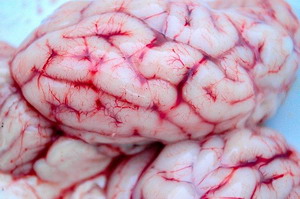 What happened in this study? It turns out that the nerves for balance and coordination degenerate away if they are not constantly used, right up to where they connect in the brain itself. The scary part is that if a concentrated effort is not applied to retrain this lost function before the nerve dies, it does not come back on its own. Even then recovery is rarely complete. We see this all the time with stroke patients. If they lose motor function, with a lot of work you can usually retrain a portion of that function back. But without retraining, it does not return. The key to understanding here is that once a nerve cell dies it is gone forever, AND LACK OF USE CAUSES NERVES TO DIE. Retraining function is a process of recruiting other nerves to take over the job of the former nerves. The only place in the brain where there is even a tiny bit of nerve replacement with new nerve cells is in the hippocampus – not an area that deals with movement.
What happened in this study? It turns out that the nerves for balance and coordination degenerate away if they are not constantly used, right up to where they connect in the brain itself. The scary part is that if a concentrated effort is not applied to retrain this lost function before the nerve dies, it does not come back on its own. Even then recovery is rarely complete. We see this all the time with stroke patients. If they lose motor function, with a lot of work you can usually retrain a portion of that function back. But without retraining, it does not return. The key to understanding here is that once a nerve cell dies it is gone forever, AND LACK OF USE CAUSES NERVES TO DIE. Retraining function is a process of recruiting other nerves to take over the job of the former nerves. The only place in the brain where there is even a tiny bit of nerve replacement with new nerve cells is in the hippocampus – not an area that deals with movement.
 Another vital piece to grasp is that just by being alive, 10,000 to 50,000 nerve cells die every day, never to be replaced. The brain compensates for this by making more connections between the cells that are left, but those lost cells were for a memory, or a thought pathway, that may be gone forever. What I am hypothesizing is that I lost a coordination pathway for one specific tiny muscle between L5 and L4 on my right in my low back – probably either a rotatory or a transversarii muscle. I base that on what showed up when I tested to adjust the area and what adjustments made it better. This is not a mechanism of back pain that I have ever been taught, nor can I find any reference to it with research. But it fits what I experienced based on physiology and neurology. I believe that part of the nerves that coordinate the proper function of that spinal stabilizer muscle lost function spontaneously. This perception is bolstered by my experience that I could compensate for the problem and prevent the spasm just by holding lightly onto a table or chair while bending. This is a classic compensation that patients with poor proprioceptive function use to be safe. In those cases, the issue is not usually confined to one tiny muscle, but a more general loss over large areas that creates a tendency to fall over.
Another vital piece to grasp is that just by being alive, 10,000 to 50,000 nerve cells die every day, never to be replaced. The brain compensates for this by making more connections between the cells that are left, but those lost cells were for a memory, or a thought pathway, that may be gone forever. What I am hypothesizing is that I lost a coordination pathway for one specific tiny muscle between L5 and L4 on my right in my low back – probably either a rotatory or a transversarii muscle. I base that on what showed up when I tested to adjust the area and what adjustments made it better. This is not a mechanism of back pain that I have ever been taught, nor can I find any reference to it with research. But it fits what I experienced based on physiology and neurology. I believe that part of the nerves that coordinate the proper function of that spinal stabilizer muscle lost function spontaneously. This perception is bolstered by my experience that I could compensate for the problem and prevent the spasm just by holding lightly onto a table or chair while bending. This is a classic compensation that patients with poor proprioceptive function use to be safe. In those cases, the issue is not usually confined to one tiny muscle, but a more general loss over large areas that creates a tendency to fall over.
 Does any of this experience sound familiar to any of you? Have you bent over to pick something up and had your back go “out” as you start to come up? I am not talking about picking up something too heavy, but your back going out for no good reason at all. I used to attribute this to a similar loss of coordination of stabilizer muscles due to muscle fatigue. I did that one years ago by working bent over sanding cabinet doors for too many hours. But this ouch was while my muscles were fresh, not fatigued. When things pinch that usually don’t pinch, it means something is going wrong in the coordination of the movement muscles. Most of the time this loss of coordination is due to conflicts or confusions in the feedback from the joint and muscle nerves that measure tension called Golgi bodies and spindle cells. These are primarily what the activator is “adjusting” when you come into the office. Once their messages are reset back to normal, then the muscles re-balance and the joint pinching goes away. Any minor tissue damage that produced swelling and inflammation usually heals within a couple of days.
Does any of this experience sound familiar to any of you? Have you bent over to pick something up and had your back go “out” as you start to come up? I am not talking about picking up something too heavy, but your back going out for no good reason at all. I used to attribute this to a similar loss of coordination of stabilizer muscles due to muscle fatigue. I did that one years ago by working bent over sanding cabinet doors for too many hours. But this ouch was while my muscles were fresh, not fatigued. When things pinch that usually don’t pinch, it means something is going wrong in the coordination of the movement muscles. Most of the time this loss of coordination is due to conflicts or confusions in the feedback from the joint and muscle nerves that measure tension called Golgi bodies and spindle cells. These are primarily what the activator is “adjusting” when you come into the office. Once their messages are reset back to normal, then the muscles re-balance and the joint pinching goes away. Any minor tissue damage that produced swelling and inflammation usually heals within a couple of days.
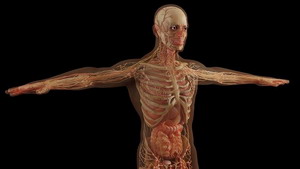 What I am now seeing explains those occasional conditions in which the adjustment produces some immediate relief, but the pain pattern keeps coming back. Some sort of neurological reconditioning needs to take place to encourage other nerve cells to compensate for the loss of some of the original nerve cells. Essentially this all comes down to a lot of carefully engaged muscle movement to tell the brain that we want to recruit some other brain cells to do this job. This is the job of rehabilitation exercises. The primary muscles that need to be rehabilitated are the little stabilizer muscles around the spinal vertebra. There are seven layers of these muscles. My favorite rehabilitation exercises for these muscles are the Foundation Training exercises found on YouTube. Here is the most basic one.
What I am now seeing explains those occasional conditions in which the adjustment produces some immediate relief, but the pain pattern keeps coming back. Some sort of neurological reconditioning needs to take place to encourage other nerve cells to compensate for the loss of some of the original nerve cells. Essentially this all comes down to a lot of carefully engaged muscle movement to tell the brain that we want to recruit some other brain cells to do this job. This is the job of rehabilitation exercises. The primary muscles that need to be rehabilitated are the little stabilizer muscles around the spinal vertebra. There are seven layers of these muscles. My favorite rehabilitation exercises for these muscles are the Foundation Training exercises found on YouTube. Here is the most basic one.
Powerful Posture from Foundation Training in this 60sec Founder Tutorial
Comfort equals degeneration
 But – there is a very basic understanding you must have to benefit from exercising the balance and coordination muscles, really any muscles. Improvement comes from very specific conditions. You have to be able to tell your brain that you want to do more than you can presently do, but you need to do this without damaging the muscles, tendons, or joints. The brain knows you want more when what you are doing becomes uncomfortable. If the exercise you are doing is comfortable to do then you are gaining nothing. But if you push things to the point of pain then a whole lot of other things start happening that you don’t want. You have to feel that fine edge where the activity is uncomfortable but not painful. That means you can not follow a prescription to do so many sets of some predetermined weight. What you need to do will be different every day and at different times of the day. You have to be fully present and feel what is going on in the area you are working on. If there is too much inflammation or swelling, what you feel will be pain telling you to not do that movement or exercise. We are after discomfort, not pain. Often after I work on someone I will tell them to only use heat followed by cold and to avoid certain activities while the inflammation settles down. Once that is okay then we engage in rehabilitative exercises. You don’t need to be pain-free to engage in the exercise, but the swelling needs to be reduced enough so that the joint movement will be normal and the exercise does not make the pain worse.
But – there is a very basic understanding you must have to benefit from exercising the balance and coordination muscles, really any muscles. Improvement comes from very specific conditions. You have to be able to tell your brain that you want to do more than you can presently do, but you need to do this without damaging the muscles, tendons, or joints. The brain knows you want more when what you are doing becomes uncomfortable. If the exercise you are doing is comfortable to do then you are gaining nothing. But if you push things to the point of pain then a whole lot of other things start happening that you don’t want. You have to feel that fine edge where the activity is uncomfortable but not painful. That means you can not follow a prescription to do so many sets of some predetermined weight. What you need to do will be different every day and at different times of the day. You have to be fully present and feel what is going on in the area you are working on. If there is too much inflammation or swelling, what you feel will be pain telling you to not do that movement or exercise. We are after discomfort, not pain. Often after I work on someone I will tell them to only use heat followed by cold and to avoid certain activities while the inflammation settles down. Once that is okay then we engage in rehabilitative exercises. You don’t need to be pain-free to engage in the exercise, but the swelling needs to be reduced enough so that the joint movement will be normal and the exercise does not make the pain worse.
 From your side of the situation, this is the key understanding you need to make your recovery effective. When we are able to focus in on that fine edge of discomfort without pain consistently, the time for recovery is much faster. Because of the discomfort, rehabilitation is not much fun. The fun is in being able to do what you want to do without pain once the rehab is done.
From your side of the situation, this is the key understanding you need to make your recovery effective. When we are able to focus in on that fine edge of discomfort without pain consistently, the time for recovery is much faster. Because of the discomfort, rehabilitation is not much fun. The fun is in being able to do what you want to do without pain once the rehab is done.
Take care,
David
